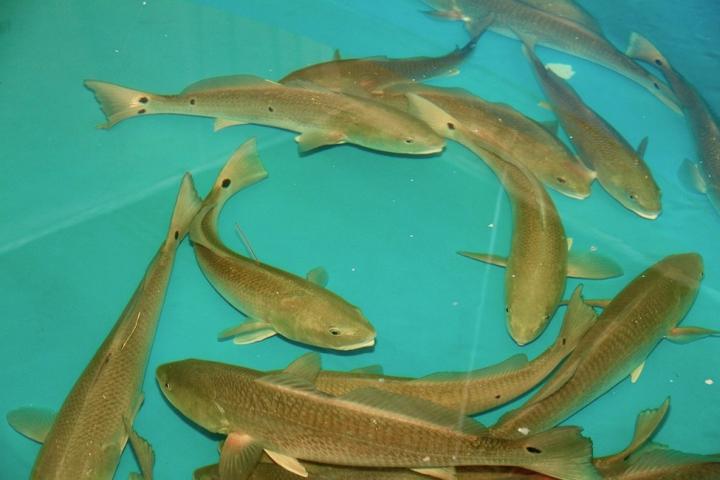
Florida Atlantic University is looking to boost aquaculture in the U.S.
August 15, 2019
By ANA staff
 Adult Red Drum broodfish (Credit: Florida Atlantic University Harbor Branch Oceanographic Institute)
Adult Red Drum broodfish (Credit: Florida Atlantic University Harbor Branch Oceanographic Institute) Florida Atlantic University (FAU) has received US$2.4 million from the United States Department of Agriculture (USDA) as part of the government’s initiative to improve domestic aquaculture production.
FAU’s Harbor Branch Oceanographic Institute announced Aug. 7 that the government fund will support the faculty’s ongoing research and development into warm water finfish. USDA scientists will work with university researchers to develop new technologies to ensure a steady supply of warm water marine fish seedstocks for commercial production.
“Aquaculture producers need access to seedstocks for breeding purposes that are available year-round and optimized for the production environment,” said Paul Wills, project director and associate director for research at Harbor Branch. “We need to develop seedstocks that are bred for maximum production efficiency and have minimal impacts on the environment and native populations.”
According to FAU’s Oceanographic Institute, more than half of seafood consumed in the United States comes from aquaculture, yet only one per cent is produced domestically. The warm fin fish aquaculture industry is struggling to grow and is unable to meet consumer demand for high-quality fish products.
One of the primary obstacles in expanding aquaculture in the U.S. is the availability of juveniles needed to supply grow-out operations. Small farms and small producers have difficulty maintaining broodstock, larviculture and juvenile production because they require facilities and resources that can provide a substantial production output in order to be economical. Moreover, they need highly skilled, technically savvy personnel, which requires higher salaries. All of these challenges pose both economic and technical burdens on aquaculture producers.
Focused on improving market competitiveness for domestic aquaculture producers, FAU’s Harbor Branch project will initially focus on Florida pompano (Trachinotus carolinus) and red drum (Sciaenops ocellatus) as model species for improvement.
Wills, his FAU colleagues and USDA Agricultural Reseach Service collaborators will conduct research related to reproduction, nutrition and fish health to improve reliability and efficiency of seedstock production. The team will develop selective breeding methods for genetic improvement of warm water marine finfish for optimum production efficiency in a variety of warm water marine aquaculture systems. Broodstock and breeding programs will be a key strategy for increasing sustainable food production.
“With declining fisheries and the need to feed close to 10 billion people by 2050, it is projected that global aquaculture production will need to more than double in the next 40 years,” said James Sullivan, executive director of Harbor Branch. “We are excited about the support we have received from the USDA to enable us to continue our research in aquaculture – the fastest growing sector of agriculture. This important industry is providing solutions for food needs and preserving the world’s fisheries.”





